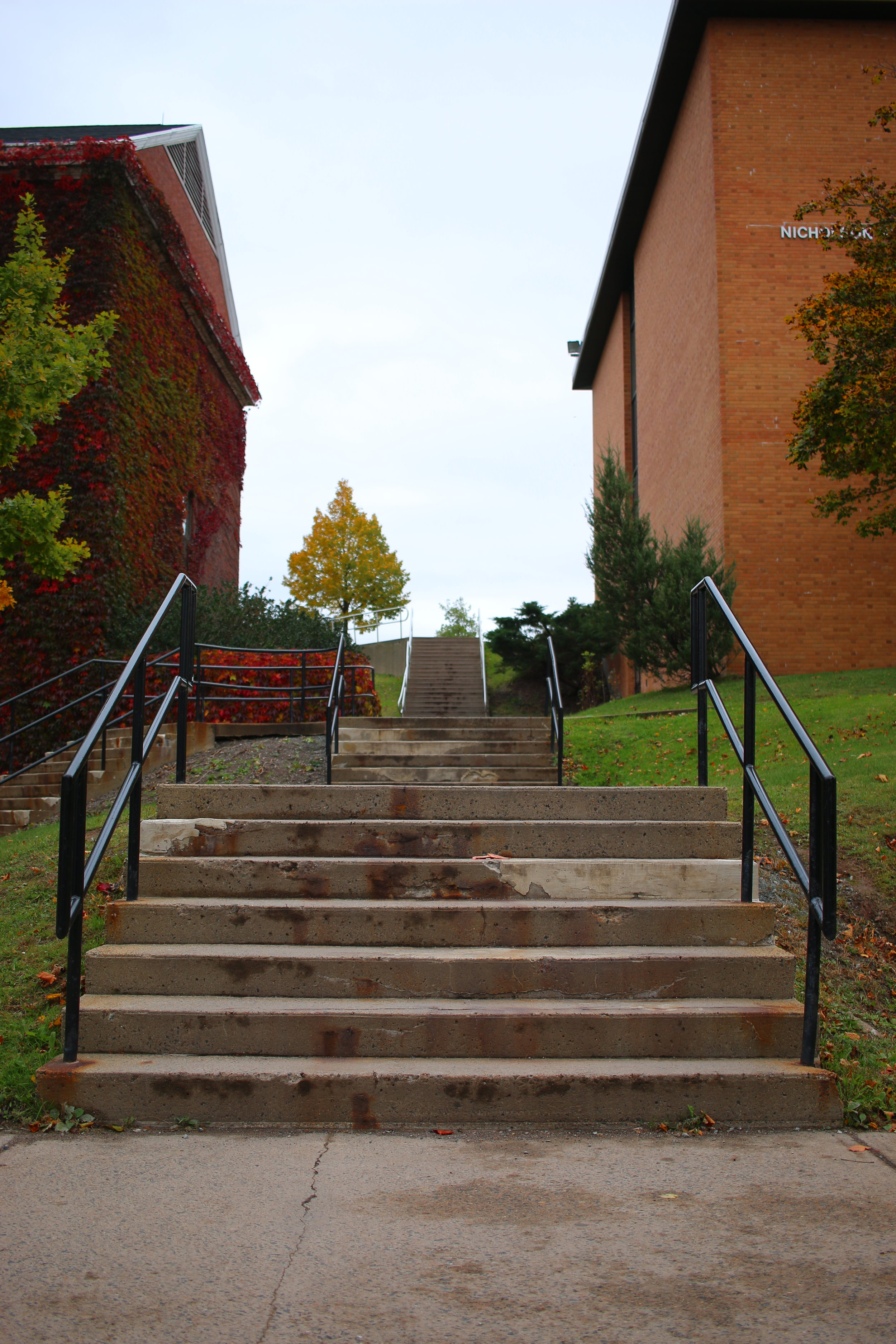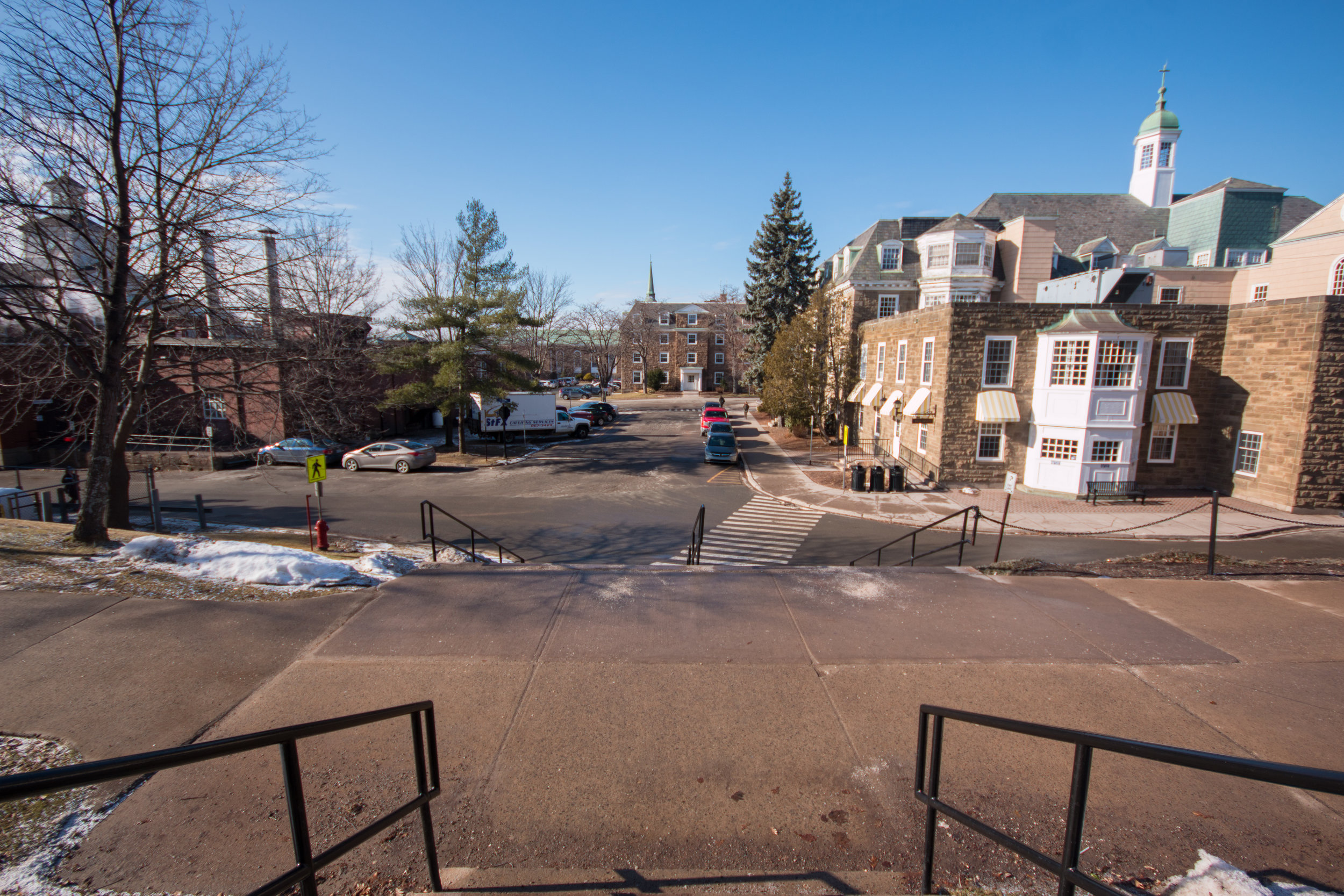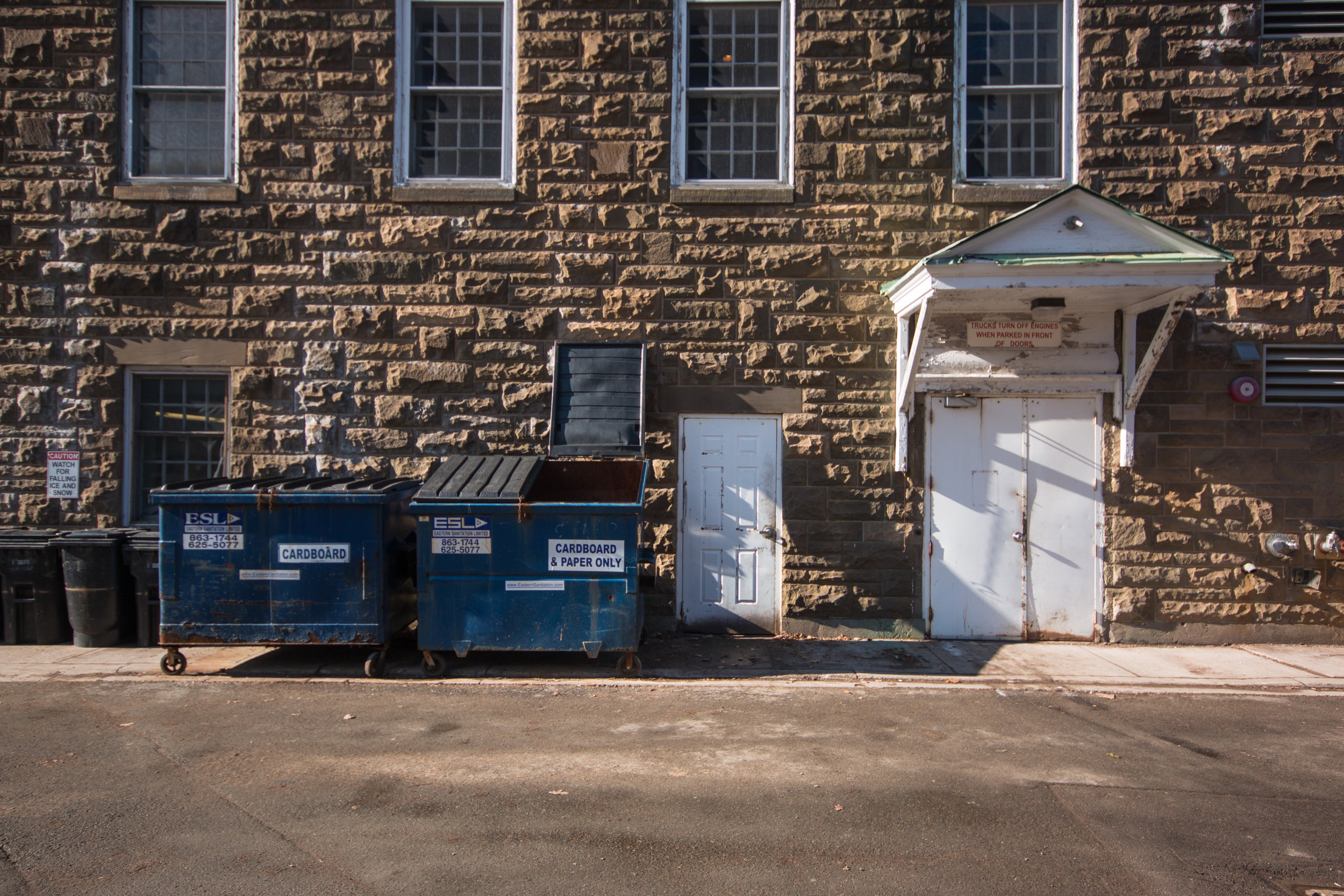StFX executive clarifies details surrounding sexual violence case
Bowen Assman and Yanik Gallie interviewed Andrew Beckett on October 16, 2018.
***
YG: What has been your role and responsibilities since the incident of sexual violence that occurred last year?
AB: Initially, my involvement would have been as chair on the judicial board that heard the case in the first place. Certainly, this case is one that I’m familiar with. Since our decision with the judicial board, my involvement after that was more responding to stories that came out and looking at what are the next steps in our response to some of the concerns that were brought forward.
BA: Talk us through the process of how an accused student can return to campus?
AB: Was he able to return to campus? Yes. I can’t get into the specifics of a particular case. In general terms, the individual was found responsible of a violent offence by the judicial board. He then appealed that decision to an appeal committee. The appeal committee upheld the decision of the judicial board. The decision of the judicial board was a one-year suspension that was involved plus training around consent. Then, there is a third layer of appeal within the community code that goes to a Senate appeal committee. They can only hear an appeal of the actual outcome, not on the finding of responsibility.
The code as it’s now set up is one that I think will absolutely be subject to possible amendment as we’re going through discussions. While a matter is under appeal, as it’s set up, the penalties don’t come into play. That’s one thing that needs to be considered. At the same time, when we got to the third layer of appeal, he had lawyers involved, our lawyers were involved, there was an agreement reached to suspend further consideration of the court case through our internal processes until the court gives way to the criminal proceedings. That’s where the suspension was put on hold, which then gave him the right to return to school this fall while the matter was still proceeding through the external processes in the criminal court.
BA: Many media outlets, and even professors, report that StFX mishandled this case. Can you address StFX’s management of this case?
AB: The policy and procedural aspects that are there were followed but may have been flawed. That’s different than mishandling. Anytime you’ve got a policy and procedures in place, until they get tested in practice, you don’t know where some of the gaps may be. Already, in terms of our processes, even since this case went through, we’ve made changes to our processes based on gaps that we saw and that will continue to happen.
The one mistake absolutely made on this was when the decision was made to suspend our processes. It put on hold any further action by the internal, therefore allowing the individual to come back to school this fall and we didn’t notify the victim/survivor of that. That was a mistake on our part. Part of our regular process is that yes, the victim/survivor should have been notified. Over the course of 8-10 months of dealing with the individual, we had been keeping them up to date with various things and we missed one. Again, I’m not trying to shy away from a significant piece of information that should have been passed along to the victim/survivor and we didn’t do it. We made a mistake.
YG: You talked about gaps in the code, what measures were lacking to ensure safety on campus?
AB: We took a series of amendments to the Senate in February of last year. If you look at those changes that were taken to Senate, they speak to the flaws that were there in the previous code of conduct. It all gets around fair process. Fairness for the respondent and the complainant.
One of the fundamental things that was in there was the respondent’s right to legal counsel throughout. Under the previous versions of the code, that wasn’t there. These are serious offences and matters that are being considered. The new version of the code in place makes it clear that they have the right to legal representation. The right of the respondent to ask questions through the chair of the judicial board of the complainant, to ensure that the judicial board has fair representation from both parties. In terms of fairness of process, there is that opportunity to not just have a statement from the complainant, but the respondent to be able to ask questions to ensure that there’s clarity in the presented facts and that wasn’t in the previous code. There was a number of changes made to tighten up the process. I stand to be corrected, but I’m pretty sure the February changes, it made clear a little bit more about the sharing of information with the victim/survivor. Things like the outcomes of any pursuing and that sort of stuff. The victim/survivor would normally be made aware of those things.
BA: Would the communication between respondent and victim/survivor be through an intermediary source or direct?
AB: It’s not a direct cross-examination because that goes into re-victimization. Whether it’s through criminal proceedings or judicial board, like it or not, there is a component of re-victimizing through that. In terms of ensuring that a respondent’s got the ability to feel that their side of the story has been put forward and that they got a chance to question any facts that have been put forward, it does mean that the victim/survivor has to go through an element of reliving their experience. That’s unfortunate, but I’m not sure there’s any way around that in terms of due process. What we put in place is that instead of a direct cross-examination, the respondent has to prepare a set of questions. Those questions are given to the chair of the judicial board. The chair reviews those questions to ensure that there is nothing that crosses the line in terms of the line of questioning that wouldn’t be acceptable in terms of questioning a person’s previous sexual history and that type of thing. Quite frankly, any question that has no relevance to the particular case is considered unacceptable. Those questions are posed by the chair of the judicial board to the complainant. They don’t have to speak directly to the respondent; they speak to the chair. Because at the end of the day, what you try to get at is the judicial board that’s there has a balanced set of information from both parties so that they can reach a decision.
What we did was there’s a lot of flexibility within that in terms of the two people don’t have to be in the same room together if they’re not comfortable or we can screen a part of the room. At the end of the day, the respondent has to have an opportunity to ensure that any facts they feel may be relevant are brought forward to the board.
BA: Who, or what group, oversees drafting revisions for the university’s sexual violence policy and code of conduct?
AB: In terms of this, you have two main documents. You have the sexual violence policy and the code of conduct. The two separate documents have to work hand in glove. The sexual violence policy is ultimately approved by the president. In terms of overseeing that, because it deals directly with students, it involves head of Student Services as being a sponsor of that policy. It’s my responsibility in terms of the day-to-day administration of that policy working with groups like our Sexual Violence Prevention committee and others on campus who help inform the administration in an ongoing review of that policy. The ultimate signoff is through the president.
The code of conduct is a Senate policy. Changes to the code of conduct have to be approved by Senate.
BA: The Students’ Union advocated for seven changes to policy. Are you going to be making these revisions?
AB: There’s been a number of suggestions put forward that I don’t think were to a specific point in terms of this revision has to be made. There are themes that have been put forward and lenses that we need to look at policy through. There’s absolutely a commitment from our standpoint to engage in that review and look at what changes we can do. They were never meant to be static documents. From that standpoint, we’re absolutely open to input and exchanges that will lead to improving those documents going forward.
YG: What are your thoughts regarding backlash from professor Donna Trembinski about your email?
AB: I respect that everybody’s entitled to have different and varying opinions. From the standpoint of the university, I think my email on the weekend explains our concerns. From an institutional standpoint, that kind of vigilante response is possibly criminal endanger. Therefore, we felt it was very important to issue a statement that condemns that part of it in the interest of getting us back to speaking about ongoing pervasive issues that we know we got to address. We don’t think that’s an appropriate response, and again it is a potentially criminal response.
I have seen a variety of responses from Donna and other faculty members. I respect them, and we are in an environment where these things should be debated and tossed around. I absolutely respect others having concerns and not agreeing with it, that’s part of the environment.
I would never want to shut that down. If you can’t do it here, where can you do it? In a university environment, we should be having those types of exchanges. I would hope that it’s done in a respectful way. I didn’t take offence to Donna challenging the viewpoints, that’s great and I respect that.
It’s been interesting. If you look at it from a personal standpoint, sometimes you have to take it on the chin in the interest of moving forward. I recognize from my standpoint that I’m on the privileged side of things. This is something that in my four plus years of university, I have become increasingly, through various conversations, aware of. I’m a white, middle-aged, male. A lot of privilege goes along with that.
When I listen to victim/survivors and people of different racial backgrounds or different gender backgrounds, me being able to take it on the chin and having to feel uncomfortable about some of this, I think a lot of people would quite frankly say, “It’s about time.” Because they felt uncomfortable for a long time. I don’t see that as a bad thing, it’s part of learning.
BA: Moving forward, how do we reclaim safety on campus in light of the situation?
AB: If I were following along the lines of the victim-centric approach, which I think that’s something people are advocating for, I don’t think that the university can decide what that looks like. I think we need to engage with people on campus who are not feeling safe and allow them to tell us how they may be able to feel safer. I met with a group of students yesterday. Things like the campus environment that may play into this, maybe it’s lighting on campus. There’s some of those environmental considerations. The real deeper conversations that have got to take place, and we are working with the Antigonish Resources for Women Centre, is trying to unpack cultural questions. To me, the tougher questions to get at are what in our culture is contributing to all this? We’ve got a culture, and it’s not just StFX, it’s all universities but we have to start with StFX. What in our culture is promoting sexual violence taking place? We know it’s taking place and it’s unacceptable. What’s contributing to that? Is it things like the studies of the connection between alcohol and sexual violence? Is the party culture that we’ve got contributing to this? Is our residence culture contributing to this? We need to unpack that more and better understand what in our culture may be playing a part of this sexual violence pervasiveness.
We need to include a lot of people in this conversation, not the least of which should be to include males in the conversation. The statistics are pretty clear in terms of males causing 94-95% of sexual violence cases. That doesn’t mean 94-95% of males are perpetrators. When violence happens, a majority of time it involves males.
When you look at things like Take Back the Night walks and things organized by females to speak about sexual violence, the audience is largely female. We’ve got to look for ways to get more males involved in the conversation. We have to figure out what aspects of masculinity are playing into this and understand that better. They are the tougher conversations that we have to get people engaged with that. Hopefully, with all the attention that’s been here in the last ten days, it’ll have more people join in the conversation.
BA: Do you have any other concrete plans besides partnering with the Antigonish Women’s Resources Centre?
AB: We’ve got some recommendations from the Students’ Union and there was the protest at the weekend and a series of calls to action associated to it. A large number of female faculty members put out a letter with calls to actions attached to it. We’re filtering all that through our Sexual Violence Prevention committee that has representation from faculty, staff, students and community. We use that as a place to synthesize all that over the next six to eight weeks. Some of this is gonna take some time to go through. We know it’s important first and foremost to deal with the emotional aspects of this and allow some space for people to be heard. We’re looking at a variety of things that could be done in that regard. The committee had a meeting today where they’re starting to map out a timeline over the next six to eight weeks of different things like a project is doing a series of focus groups in November. The Students’ Union have planned the student inform session this Saturday. We’ve got a talkback session in the next two or three weeks to give people an opportunity to feel that they have been heard. Then, we can start to look at all of the themes that come from all of that and say let’s prioritize in an orderly fashion in the next while to improve.
YG: What’s your opinion of this weekend’s protest during Kent MacDonald’s speech at the Open House?
AB: My overall reaction is that I go back to the university environment. Protests should never be deterred. This is an opportunity and environment that should promote freedom of expression and speech. This is a hot button issue. When you look at what took place last week, there’s a combination, certainly some are angry with the way the victim was treated in this particular case. More than that, I think it opens a wound for a lot of people who have been impacted by sexual violence. A lot of people feel they haven’t been heard. I think when your frustration level rises there’s an anger that comes with that they feel the need to express. On the campus environment, I accept the people’s right to protest. From what I heard, and from the people I’ve talked to, the protest was respectful. They protested, and they could have been more destructive. To the credit of the protestors, I think they found a good balance in terms of making a statement but not taking it too far like disrupt the Open House. I think it’s important for people to feel that they’ve been heard.



































